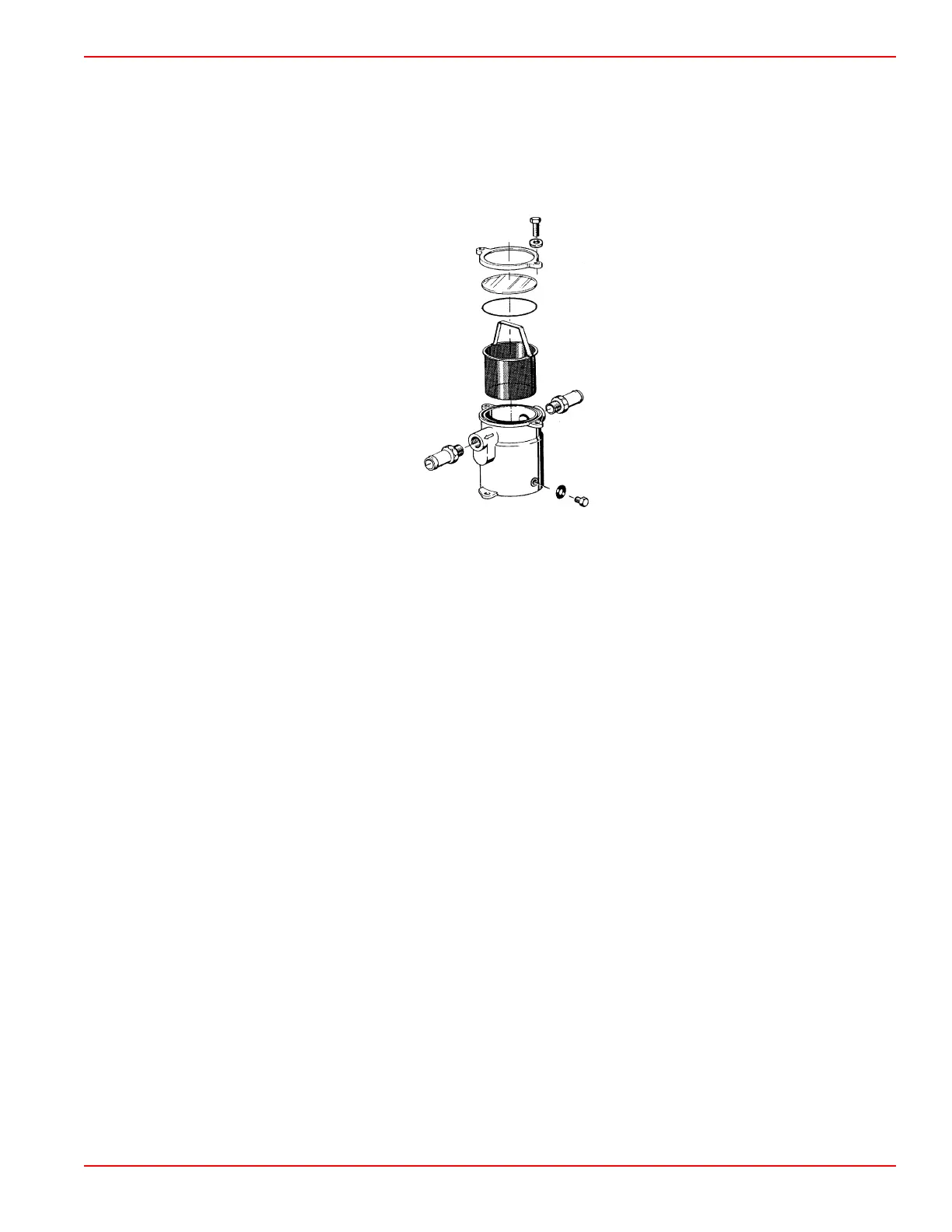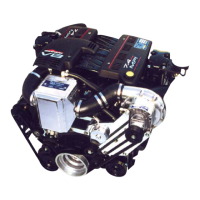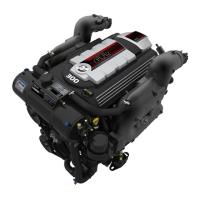Seawater Strainer
A seawater strainer is recommended if the boat is operated in an area with a high debris content. Use 32 mm (1‑1/4 in.) I.D.
wire‑reinforced hoses on the inlet and outlet sides of the strainer fittings. The strainer must be sized to minimize restriction
(refer to Specifications) and to provide a reasonable service interval. Locate the strainer in an area that is accessible for
servicing. If the boat is not equipped with a seacock, the strainer should be located above the waterline to prevent seawater
entry into the boat when servicing. The strainer must have a provision to allow draining in freezing temperatures.
7533
Typical seawater strainer
Seawater Pickup
Either a through‑transom or through‑hull seawater pickup can be used. Select the pickup location to minimize the length of the
32 mm (1‑1/4 in.) I.D. wire‑reinforced seawater inlet hose, while providing an optimum location for seawater pickup. The
location should be in an area that provides a solid, air‑free flow of seawater under all operating conditions. Avoid areas with a
disturbed seawater flow, such as those behind or in close proximity to the propeller. Locations that are too far forward or
outboard should also be avoided as these are prone to aeration problems at high boat‑trim angles and while turning.
IMPORTANT: Do not install the seawater pickup directly in line with the propeller, as the pickup may create turbulence and
allow air to flow into the propeller slip‑stream. This will cause propeller ventilation and will adversely affect boat performance.
Openings in seawater pickup should be a maximum of approximately 3 mm (1/8 in.) to prevent large debris from entering and
clogging the cooling system.
IMPORTANT: Use a seawater strainer if the seawater pickup openings exceed 3 mm (1/8 in.).
Some industry standards and regulations require that the pickup be connected into the boat's bonding system to minimize stray
current corrosion. Refer to applicable standards and regulations for more details.
Models with Closed Cooling
90-8M0099748 eng DECEMBER 2015 © 2016 Mercury Marine Page 6C-7
